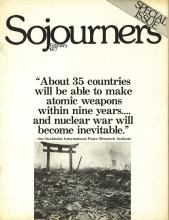Although the idols of Canaan and Philistia are museum relics today, idolatry is still a major force in human affairs. The 20th century has reaffirmed the idolatries of race and nation that have dominated human history from its start. It has also enshrined the idolatry of technology.
The essence of idolatry is the worship of the creation of the creature, rather than the Creator. It is the placement of ultimate trust as well as personal and corporate loyalty in any concept other than God. Thus, the idolatry of technology is the belief that the pursuit of technology is by definition the pursuit of progress.
Technology is not itself idolatrous. Rather it is the belief that technology must produce more good than evil, that technology is perfectible, and that technical solutions can be found to remedy the fundamental fallibility and sinfulness of human nature that is idolatrous.
In both the impetus to develop atomic power and in the bitter fruits of its development, the idolatry of technology is clearly evident. After the explosion of the atomic bombs on Japan, there was a powerful desire in the United State to use atomic technology for the good of humankind. Because its destructive powers were obviously enormous, technological faith required a demonstration of its constructive powers. Despite voices of dissent, there was an outward national consensus, supported by inner guilt, that the peaceful uses of the atom must be developed. This goal was pursued through huge expenditures of tax dollars to develop methods of producing electricity from the heat generated by the controlled fission of uranium. Those who questioned the benefits of atomic power were branded as opponents of progress.
Read the Full Article

